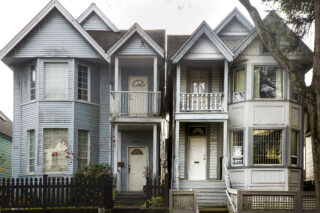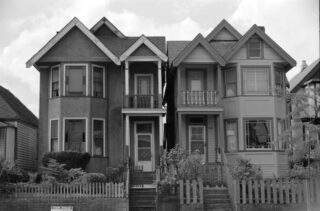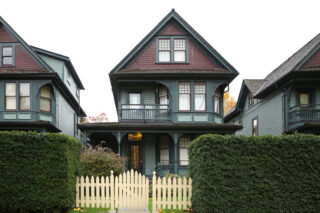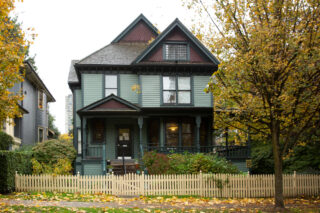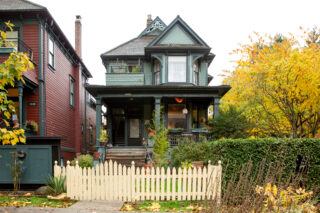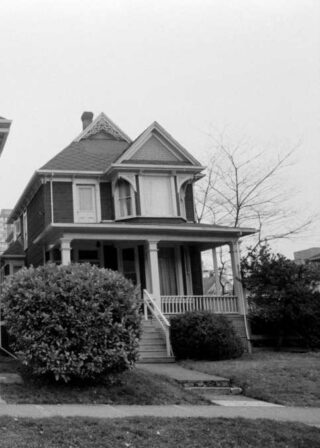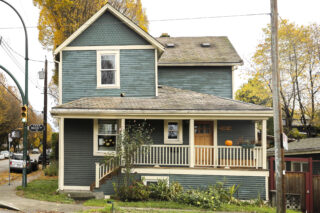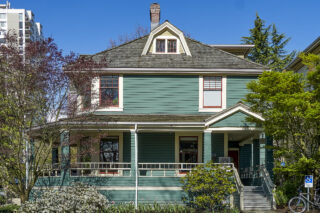Many Victorian homes feature patterned shingles (ie. fishscale shingles), which are often applied in gables or bays. Multiple textures and colours are common. Gingerbread detailing is used under the eaves and along porch roofs. Porch roofs can be supported by ornamental turned columns while doors are usually heavy wood with a glass panel.
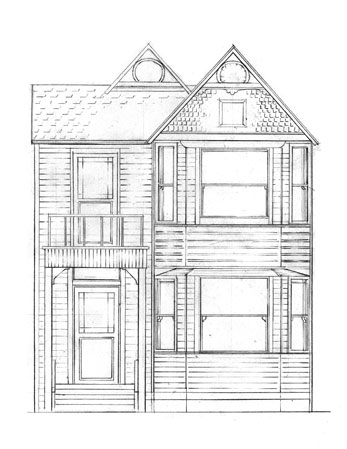
Click on the diagram or expand the term index to learn more about the features.
Balcony
A balustraded or raised and railed platform projecting from a wall of a building.
Bargeboard
Also called a vergeboard, a board or other decorative woodwork fixed to the edges or projecting rafters of a gabled roof. When perforated or turned elaborately, also called gingerbread.
Bay Window
Distinguished through an outward projection from the façade, bay windows are characteristic of Victorian, Edwardian and Queen Anne Revival houses. Each of these bays may have one or more sash windows, which are traditionally built with a wood frame. Smaller panes of glass divided by glazing bars are generally found within the top sash, while the bottom sash may only have one sheet of glass.
Bracket
A structural member, often triangular in form, that projects from a wall or other vertical surface to support another component, such as an eave. Some brackets are purely decorative and have no structural or supporting function.
Cladding
Also referred to as siding, cladding is the outermost layer of the wall system, providing resistance to the natural elements and acting as a control device for drainage. Depending on the house style, various kinds of stucco, horizontal and vertical boards may be used as cladding. Types of cladding/siding: Board and Batten Clapboard Drop Lap Masonry Shakes Shingle Shiplap Stucco
Double Hung Window
A pair of superimposed wooden sashes that are offset so as to slide up and down within the same frame. A double hung window that has horns on its upper sash are most likely pre World War I.
Gable Ornamentation
Wood detailing often found on the front-facing gables of Victorian and Queen Anne homes. Gables may be ornamented with ‘sunburst,’ ‘scrollwork,’ or ‘stickwork’ motifs and may include ‘fishscale,’ ‘diamond,’ or other kinds of shingle patterns.
Transom
A window or light above a door or window.
Form
Victorian houses are asymmetrical, narrow, 2-storey buildings, typically set low to the ground (as they lacked central heating). They often have a prominent bay on one side that may ascend to the roof, which is typically a gabled one. A half-porch sheltering the front door sometimes supports a small deck space for the upstairs. Highly decorated surfaces, especially fish-scale shingles, are typical in gables and on dormers, as are elaborate fretwork brackets on porches, bays, and under eaves. The style is rare in Vancouver outside of Strathcona as earlier examples from the downtown and the West End have mostly been demolished.
Background
The Victorian era lasted from 1837 – 1901, named for the reign of Britain’s Queen Victoria. However, only styles from the last decades of her reign are classified as ‘Victorian’. In this era, industrialization and the expansion of the railways allowed for the development of lighter framing methods, which changed the character of housing design and construction. The influence of these changes filtered down to Vancouver, where timber proliferated and local mills mass-produced intricate detailing. This meant that inexpensive decor such as gingerbread could be applied to all kinds of house forms. The result is an elaboration of shapes and details on Victorian buildings. Like Gabled Vernacular homes, they usually have front-gabled roofs, but asymmetrical facades and prominent bays distinguish Victorian houses in Vancouver. Their narrow form made them well-suited for city lots.
Details
- Usually front-gabled with cross gables
- Steeply pitched roof
- 2 to 2-1/2 stories
- Asymmetrical facade
- Prominent bay on one side
- Half-porch with classically inspired columns
- Elaborate fretwork braces on porches, bays, under eaves
- Decorated surfaces – e.g. shingles in gables
Materials
Paint Schemes
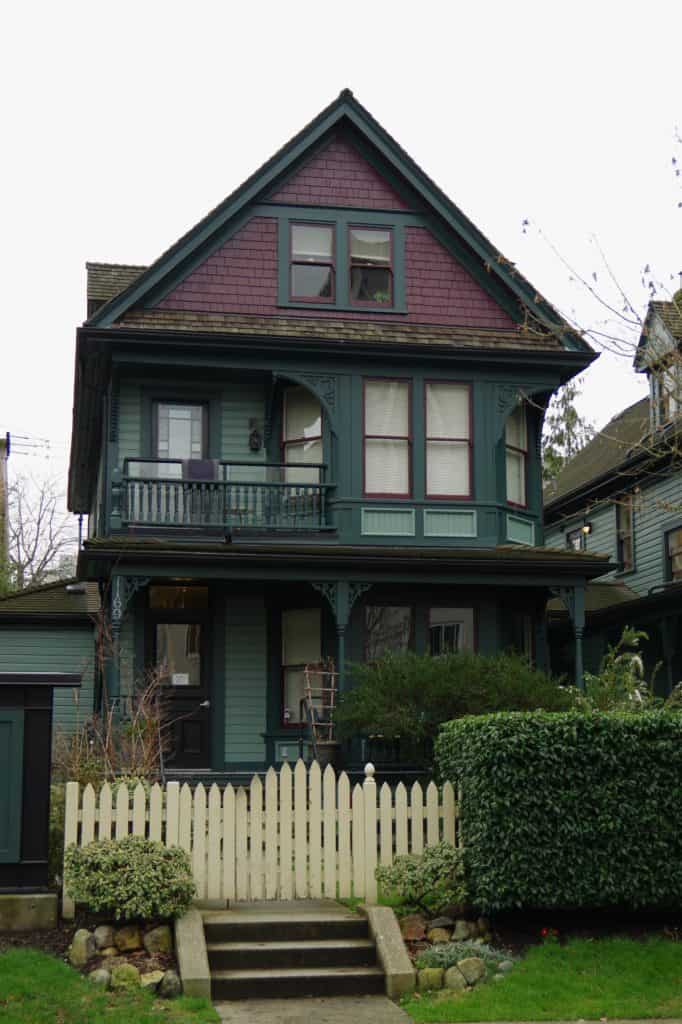
painted in a True Colours scheme.
Photo Credit: Rick Horne
- Victorian homes typically had a mid-range to dark body colour with darker trim.
- Details were sometimes painted in a complimentay colour, such as in the gable end.
- Typical Colour Schemes include;
- Pendrell Verdigris (VC-22) body, Pendrell Green (VC-18) trim, Pendrell Red (VC-29) gable and Hastings Red (VC-30) sash (see right)
- Edwardian Buff (VC-6) body, Edwardian Porch Grey (VC-26) trim, Strathcona Red (VC-27) gable and Gloss Black (VC-35) sash

